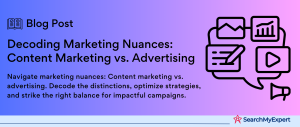Advertising Technology
The Transformative Power of AdTech in the Digital Era
In the realm of digital marketing, advertising technology, or AdTech, stands as a monumental innovation, fundamentally altering the landscape of advertising as we know it. This technology encompasses a spectrum of software and tools used in the digital advertising space, ranging from demand-side platforms (DSPs) to data management platforms (DMPs), and more. The significance of AdTech cannot be understated in our rapidly digitalizing world, where traditional advertising channels are rapidly giving way to more dynamic, interactive, and targeted online platforms.
Revolutionizing the Advertising Industry
The advent of AdTech marks a pivotal point in the advertising industry, revolutionizing the way brands interact with their audiences. This transformation is not just a change in medium, but a fundamental shift in approach, allowing for unprecedented levels of precision and personalization in ad campaigns. The evolution from blanket broadcast strategies to targeted, data-driven campaigns has opened new horizons for marketers and advertisers alike.
Embracing the Future: The Need to Stay Ahead
Understanding and embracing the evolving trends in AdTech is not just beneficial, but essential for any player in the modern advertising world. With rapid technological advancements, staying abreast of these changes is crucial. From leveraging big data for better audience insights to utilizing programmatic advertising for efficient ad buying, the future of advertising technology is ripe with potential. As such, exploring these trends is not just about keeping up; it’s about seizing opportunities to redefine the way we think about and execute advertising in the digital age.
The Rise of Artificial Intelligence (AI) in Advertising
AI: Redefining Automation and Optimization in Advertising
Artificial Intelligence (AI) has emerged as a game-changer in the field of advertising technology, offering innovative solutions for automating and optimizing advertising campaigns. AI’s role in AdTech extends beyond mere automation; it represents a fundamental shift in how advertising strategies are formulated, executed, and evaluated.
AI in Data Analysis and Predictive Modeling
The core strength of AI in advertising lies in its ability to process vast amounts of data efficiently and intelligently. AI algorithms can analyze consumer behavior, market trends, and engagement metrics to glean actionable insights. This data analysis capability is crucial in developing predictive models that forecast consumer responses, enabling advertisers to tailor their strategies proactively rather than reactively.
Personalization: The New Frontier
Perhaps the most striking application of AI in advertising is in personalization. AI enables the creation of highly personalized ad experiences by understanding individual consumer preferences, browsing habits, and purchase history. This level of personalization ensures that consumers are presented with advertisements that are not only relevant but also resonate on a more personal level.
Enhancing Ad Targeting and Creative Optimization
AI’s potential in advertising extends to enhancing ad targeting and creative optimization. By harnessing AI, advertisers can refine their targeting strategies, ensuring that their messages reach the most relevant audiences. Moreover, AI can assist in the creative aspect of advertising, suggesting adjustments to ad design, copy, and format based on real-time performance data. This not only maximizes the impact of ads but also ensures that resources are utilized efficiently.
Real-Time Decision Making: A Competitive Edge
In the fast-paced world of digital advertising, the ability to make real-time decisions is a significant competitive advantage. AI empowers advertisers with this capability, enabling them to adjust campaigns on the fly based on ongoing performance data. This agility ensures that ad campaigns remain effective and relevant, adapting to changing market conditions and consumer behaviors.
The Evolution of Programmatic Advertising
Redefining Digital Ad Buying and Selling
In the dynamic world of digital advertising, programmatic advertising has emerged as a game-changer. It’s a method that has transformed the traditional approach to buying and selling ad space, leveraging technology to automate and optimize the process.
What is Programmatic Advertising?
Programmatic advertising refers to the use of automated technology for buying and selling of advertising space, primarily in the digital realm. This method utilizes algorithms and machine learning to purchase display space, targeting specific audiences at scale. It moves away from the traditional negotiation and manual insertion order process, making ad buying more efficient and data-driven.
Growth and Adoption of Programmatic Platforms
The rise of programmatic advertising is marked by a significant shift in how ad space is bought and sold:
- Increased Efficiency: By automating the process, programmatic advertising minimizes the time and resources spent on ad placement.
- Real-time Bidding (RTB):
This has become a cornerstone of programmatic buying, allowing advertisers to bid on ad space in real-time, ensuring optimal placement and pricing. - Widespread Adoption: From large corporations to small businesses, the adoption of programmatic advertising has been extensive, driven by its efficiency and effectiveness.
The Benefits: Efficiency, Transparency, and Data-Driven Targeting
- Efficiency:
Programmatic advertising streamlines the ad buying process, reducing manual labor and time. - Transparency: It offers greater visibility into where ads are placed and how they perform.
- Data-Driven Targeting: Leveraging user data, programmatic advertising allows for more precise and effective targeting of potential customers.
The Immersive Experience of AR and VR in Advertising
Stepping into a New Realm
Augmented Reality (AR) and Virtual Reality (VR) are not just futuristic concepts; they are here, transforming the advertising world with immersive experiences. These technologies offer a new dimension in engaging audiences, creating interactive and memorable ad campaigns.
AR and VR: A Brief Overview
- Augmented Reality (AR):
This technology overlays digital information onto the real world. AR in advertising can mean interactive ads that come to life when viewed through a smartphone or AR glasses. - Virtual Reality (VR):
VR offers a completely immersive experience, transporting users to a different environment. In advertising, this can mean a 360-degree virtual world where a brand’s story or product can be experienced in a unique way.
Applications in Interactive Advertising
The use of AR and VR in advertising opens up a plethora of creative possibilities:
- Interactive Campaigns:
Brands can create engaging and interactive experiences, allowing consumers to interact with products in a virtual space. - Memorable Brand Experiences:
These technologies can create impactful and lasting brand experiences, far beyond what traditional media can offer.
Challenges and Opportunities
While AR and VR offer exciting opportunities, they also come with challenges:
- Technical Limitations: The need for specialized equipment and software can be a barrier.
- User Adoption:
Widespread adoption of AR and VR technology among consumers is still in its early stages. - Creative Execution:
Developing content that is both technologically feasible and creatively compelling can be challenging.
As AR and VR continue to evolve, they present an exciting frontier for advertisers seeking to create more engaging, interactive, and memorable campaigns. The potential of these technologies in transforming advertising strategies is vast, but it requires a thoughtful approach to overcome the challenges and fully leverage the opportunities.
Leveraging Blockchain for Ad Transparency and Trust
Reinventing Trust in Advertising
In the era of digital advertising, trust and transparency have become critical concerns. Blockchain technology, known for its inherent security and transparency features, is emerging as a solution to these challenges. Its application in advertising promises to bring a new level of accountability and trustworthiness to the industry.
Blockchain in Advertising: Enhancing Transparency and Accountability
Blockchain, at its core, is a decentralized ledger that records transactions in a tamper-proof manner. In advertising, this translates to:
- Enhanced Transparency: Every transaction, be it an ad impression or click, can be recorded on the blockchain, ensuring a transparent trail that advertisers and publishers can trust.
- Fraud Prevention:
The immutable nature of blockchain records helps in combating ad fraud, a major issue in digital advertising. It makes it extremely difficult for fraudulent activities to go undetected. - Improved Data Ownership and Privacy:
Blockchain allows for better control over data, giving consumers more power over how their information is used in advertising.
Applications in Ad Tracking and Data Ownership
Blockchain technology can be applied in various aspects of advertising:
- Ad Tracking:
Blockchain can accurately track ad deliveries, ensuring that advertisers pay only for legitimate impressions and interactions. - Data Ownership: It provides a framework where user data can be stored securely, and users have the choice to share their information for advertising purposes, enhancing privacy and control.
Revolutionizing the Advertising Ecosystem
Blockchain has the potential to fundamentally change how trust is perceived in the advertising ecosystem:
- Building Trust among Consumers: By ensuring transparency and giving users control over their data, blockchain can help rebuild trust between consumers and advertisers.
- Streamlining Payments: It can simplify the payment processes between advertisers, publishers, and consumers, making them more efficient and transparent.
The Importance of Context Sensitivity in Advertising
Context: The Heart of Effective Advertising
In the quest to make advertising more relevant and impactful, context sensitivity plays a pivotal role. It’s about delivering the right message, at the right time, in the right place, to the right audience.
Role of Context-Aware Technologies
Context-aware advertising technologies are designed to align ads with user intent, location, and interests. They include:
- Geo-targeting: Tailoring ads based on a user’s location.
- Behavioral Targeting:
Using a user’s past behavior to predict future interests. - Time-based Targeting:
Aligning ad delivery with specific times when they are most relevant.
Matching Ads to User Intent, Location, and Interests
The essence of context-sensitive advertising is to match the ad content with the user’s current situation:
- User Intent: Understanding what the user is looking for at a particular moment and presenting ads that align with that intent.
- Location:
Using location data to serve localized and relevant ads. - Interests:
Leveraging user interests and preferences to deliver personalized advertising.
Challenges and Opportunities
While context-sensitive advertising offers numerous opportunities, it also presents challenges:
- Privacy Concerns: Balancing personalization with privacy is crucial. Advertisers must navigate the fine line between using user data for targeting and respecting user privacy.
- Technological Complexity: Implementing context-aware technologies requires advanced systems and algorithms.
- Creating Relevant Content: Crafting ads that resonate with the context of the user demands creativity and deep understanding of consumer behavior.
Blockchain’s role in advertising represents a paradigm shift towards greater transparency and trust, while context sensitivity in advertising is pivotal for delivering impactful and relevant messages. Both these trends are shaping the future of advertising, offering exciting opportunities but also posing unique challenges.
Measuring Ad Effectiveness and ROI
Maximizing Campaign Performance through Measurement
In the realm of advertising, the measurement of ad effectiveness and return on investment (ROI) is not just a necessity; it’s the cornerstone of campaign optimization. Understanding how well ads are performing and the value they bring is pivotal for making informed, strategic decisions in advertising.
The Importance of Measuring Ad Effectiveness and ROI
- Informed Decision Making: Measuring effectiveness and ROI guides advertisers in allocating budgets and resources more efficiently.
- Campaign Optimization:
Insights gained from these measurements allow for tweaking and enhancing campaigns in real-time for better performance. - Demonstrating Value: In a landscape where every dollar counts, showing the tangible results of advertising spend is essential for justifying marketing budgets.
The Role of Data Analytics and Attribution Modeling
- Data Analytics: This involves analyzing vast amounts of data generated from ad campaigns to glean insights into user behavior, campaign reach, and conversion rates. Data analytics helps in understanding which aspects of the campaign are working and which aren’t.
- Attribution Modeling: Attribution models help in understanding how various touchpoints contribute to conversions. It answers critical questions like which channel or ad format is most effective in driving sales.
Evolving Metrics and Measurement Techniques
The landscape of ad measurement is continuously evolving, with new metrics and techniques emerging to better assess the value of advertising:
- Beyond Clicks and Impressions:
While traditional metrics like clicks and impressions are still relevant, there’s a shift towards more nuanced metrics like engagement rate, brand lift, and customer lifetime value. - Cross-Channel Measurement:
With the proliferation of channels, measuring the cumulative impact of a campaign across different platforms is crucial. - Real-time Measurement and Optimization: The ability to measure and adjust campaigns in real-time using machine learning and AI technologies is transforming how ad effectiveness is managed.
Challenges in Measurement
- Data Privacy Regulations:
With increasing concerns over data privacy, adhering to regulations like GDPR and CCPA while measuring ad effectiveness poses a challenge. - Fragmented Media Landscape:
The diverse range of platforms and channels makes it difficult to have a unified view of campaign performance.
Conclusion
In conclusion, measuring ad effectiveness and ROI is vital in the advertising industry. It requires a blend of data analytics, attribution modeling, and the development of new metrics to truly understand the value of advertising efforts. As technology evolves, so do the methods and metrics for measuring advertising effectiveness, presenting both challenges and opportunities for advertisers.
Amplify your message with our tailored Advertising Services.
Table of Contents
Toggle






